#hobo life
Text


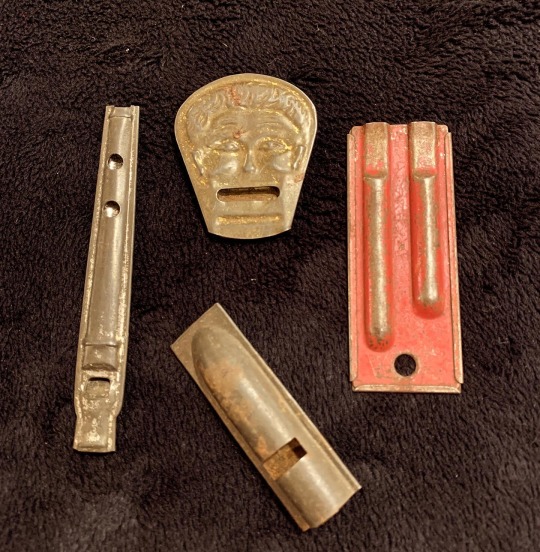
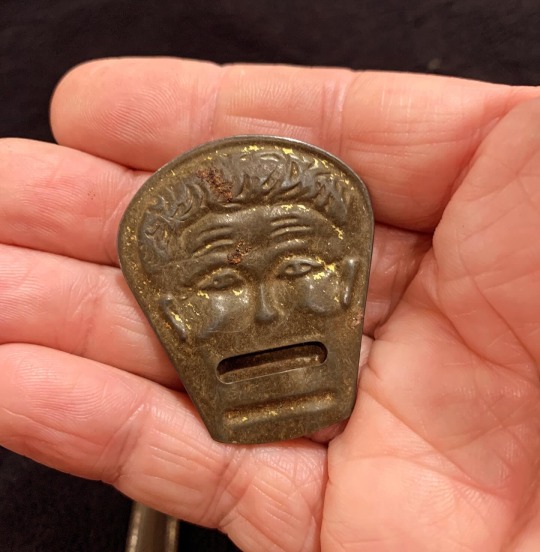

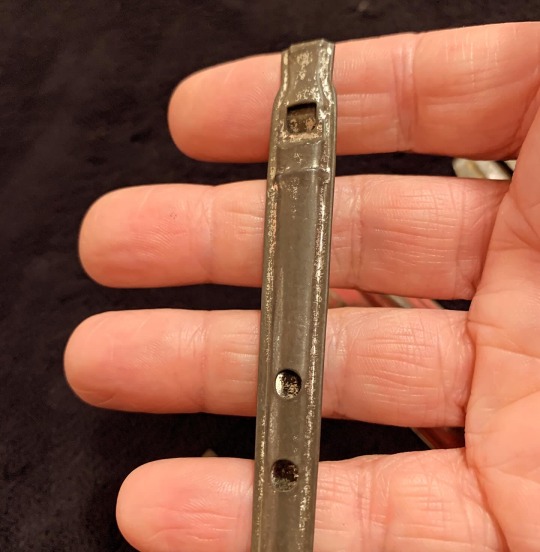

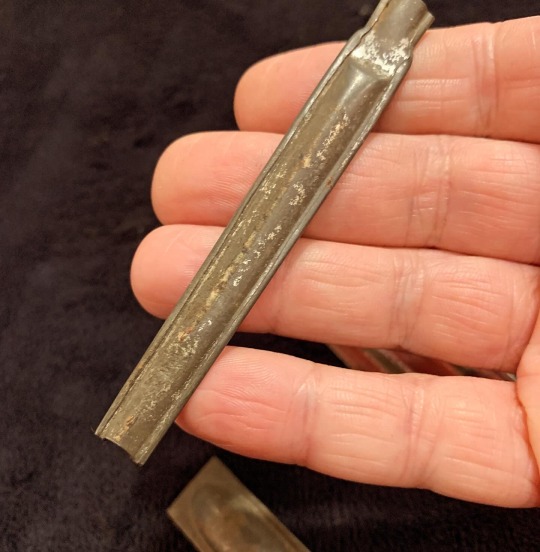
AMERICANA HOBO WHISTLES
A collection of Americana , vintage metal whistles , each with a uniquely awesome sound. I purchased these from a gentleman that was passing by New Orleans , he said was traveling the country for free a top of railroad cargo cars , what a life !!!
Item No. E5753
List Price: $ 125 for the collection.
Ships Worldwide
504.581.3733 / t
#collectibles#americana#hobo life#hobo#whistles#antique whistle#whistle blower#patina#folk art#nola#magazine street#oddities#new orleans#antiques#new orleans antiques
105 notes
·
View notes
Text


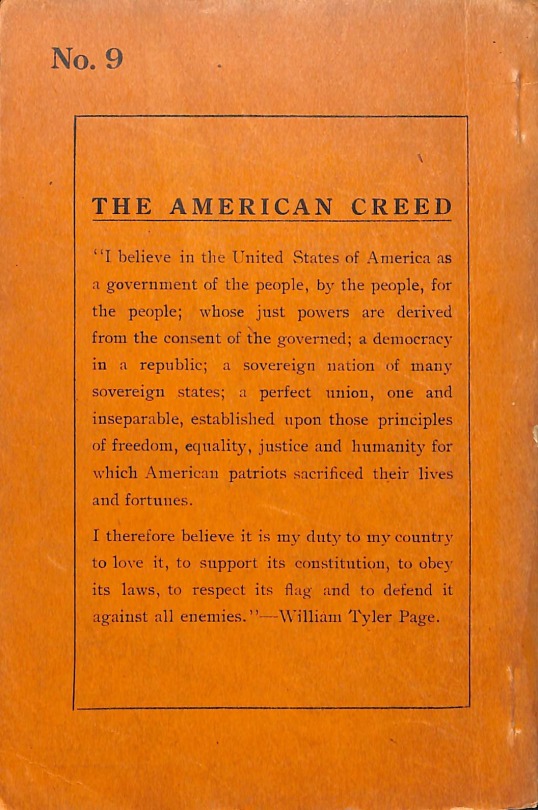

Interesting Find of the Week: Hobo Camp Fire Tales (1911) and Mother Delcassee of the Hobos: And Other Stories (1918) by A-No. 1
Hobos are a kind of migrant worker who travel around the country looking for work. They particularly make use of freight trains to move between cities and towns, an act known as "trainhopping" or "freighthopping." The peak hobo years in the United States were between the American Civil War and World War II, when trains were easier to board and itinerant labor more in demand.
Leon Ray Livingston (1872-1944), also known by his moniker "A-No. 1," was a hobo author who wrote around a dozen books about hobos and hobo life. As "America's Most Celebrated Tramp" -- as he called himself in the title of his first book -- A-No. 1 created an important record, albeit an embellished one, of a people and culture that was often excluded from written histories.
Here, we show the covers of the 2nd and 9th books in A-No. 1's writings on hobos, as well as the back cover and back endpaper of book 9. Note how the endpaper claims that hobo life is a "horrible existence;" towards the end of his life, A-No. 1 spoke against going on "the Road" after his negative experiences. This is perhaps why the back of Mother Delcassee features William Tyler Page's "The American Creed." Transcripts are below the read more.
If you're interested in reading more about hobos and hobo life, check out these other books in our collection:
Around the Jungle Fire I: A Collection of Original Hobo Poetry (1994) by Oats
Beggars of Life (1924) by Jim Tully
Boxcar Bertha: An Autobiography (1988) as told to Ben L. Reitman
Hard Travellin': The Hobo and His History (1967) by Kenneth Allsop
The Hobo: The Sociology of the Homeless Man: A Study Prepared for the Chicago Council of Social Agencies (1961) by Nels Anderson
Tales of an American Hobo (1989) by Charles Elmer Fox
The Browne Popular Culture Library (BPCL), founded in 1969, is the most comprehensive archive of its kind in the United States. Our focus and mission is to acquire and preserve research materials on American Popular Culture (post 1876) for curricular and research use. Visit our website at https://www.bgsu.edu/library/pcl.html.
Transcript to the back page of Mother Delcassee:
The American Creed
"I believe in the United States of America as a government of the people, by the people, for the people; whose just powers are derived from the consent of the governed; a democracy in a republic; a sovereign nation of many sovereign states; a perfect union, one and inseparable, established upon those principles of freedom, equality, justice and humanity for which American patriots sacrificed their lives and fortunes.
I therefore believe it is my duty to my country to love it, to support its constitution, to obey its laws, to respect its flag and to defend it against all enemies." -- William Tyler Page
Transcript of the endpaper of Mother Delcassee:
A List of the Books On Tramp Life
Written by ->A-No 1<- The Tramp Author
The First Book
Life and Adventures of A-No. 1
The Second Book
Hobo-Camp-Fire-Tales
The Third Book
The Curse of Tramp Life
The Fourth Book
The Trail of the Tramp
The Fifth Book
The Adventures of a Female Tramp
The Sixth Book
The Ways of the Hobo
The Seventh Book
The Snare of the Road
The Eighth Book
From Coast to Coast with Jack London
The Ninth Book
Mother Delcassee of the Hoboes
Each title deals with a different phase of the horrible existence that is nowadays voluntarily led by more than three hundred thousand chronic hoboes, so that everybody, especially restless youths will find the contents of each volume an everlasting warning against the road.
The Author has carefully avoided the least mention of anything that would be unfit reading for ladies or children.
A complete set of these moral and entertaining Books should be in every home.
#bgsu#interesting find of the week#hobo#hobo life#hobo camp fire tales#mother delcassee#a-no. 1#leon ray livingston
12 notes
·
View notes
Text
Can u see it?


#undertale au#utmv#undertale multiverse#sans au#xtale cross#cross sans#this was my first thought when Jakei posted it on twt#watch him go#so proud of look like a hobo#but it makes all the sense if you know enough of Cross#his need of freedom#he refuses to be as XGaster wants him to be#The clothes are destroyed by his own decision#you know? and Xgaster can't have control over that#Cross decided something in his life#but this is just my opinion
1K notes
·
View notes
Photo
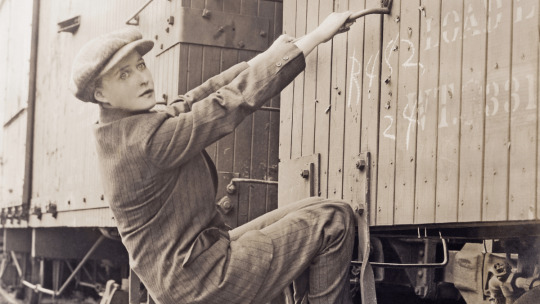
Listen to a firsthand account of hobo life in new "City of the Rails" podcast
City of the Rails is a new podcast from Journalist Danelle Morton whose daughter "Ruby" left home to ride freight trains after graduating from high school. She goes searching for her child and ends up documenting a slice of American life few will ever know personally. — Read the rest
https://boingboing.net/2023/02/09/listen-to-a-firsthand-account-of-hobo-life-in-new-city-of-the-rails-podcast.html
0 notes
Text
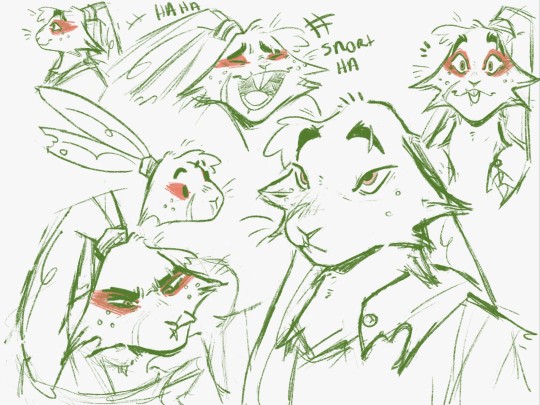
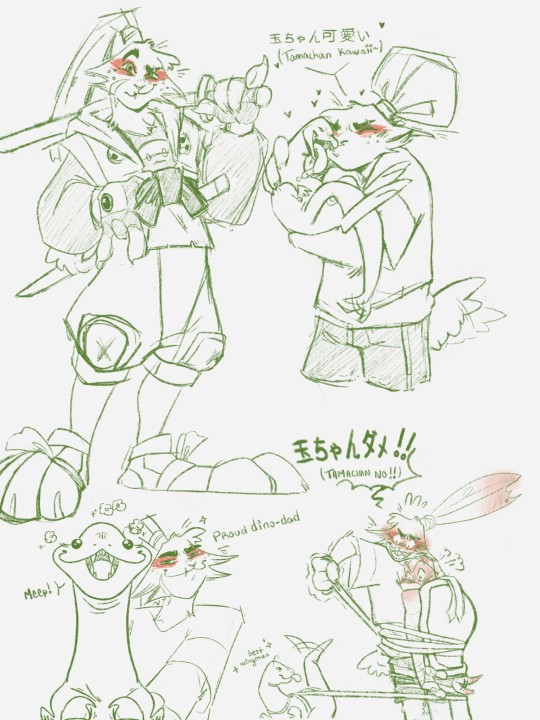
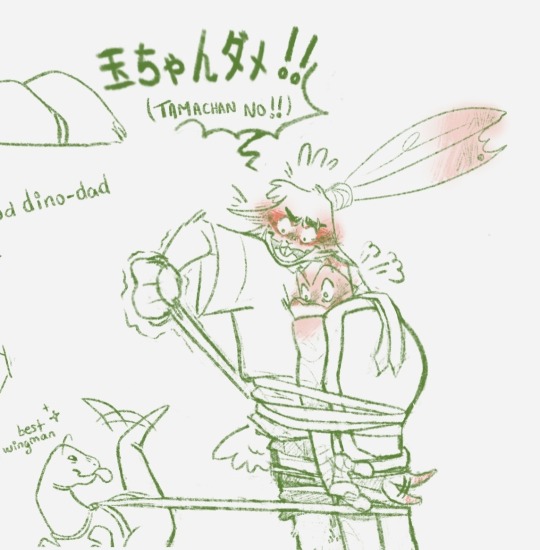
Do y'all ever go crazy and just decide to completely redesign a character because for some reason he just looked wrong the more you looked at him ?
Yeah me neither
#i might have gone on a redesign frenzy XD#my skrawny tennage hobo hare#tall lookin ass bugs bunny#but is actually a tall pubescent white hare#i've lost control of my life#rottmnt design#yuichi usagi#rottmnt leo#redisign#save rottmt
777 notes
·
View notes
Text

I recently binged Daredevil. And then binged it again ☺️
#please accept my humblr offering#of Matt “I can break you without breaking a single law” Murdock uvu#his done with life expression was so fun to draw#and I know his hobo outfit is the least appreciated in the fandom but I love it :')#daredevil#marvel daredevil#matt murdock#marvel fanart#daredevil fanart#matt murdock fanart#matthew murdock#marvel#mcu#tw: blood#tw: bruises
1K notes
·
View notes
Text

i havent (properly) drawn a dialed town character in way too long. happy birfday oliber my best friemd oliber
#dialtown#oliver swift#dialtown fanart#best routes#gay phones#hobos creations#fighting for my life try8ng to post this tumblr DOESNT WANNA ACCEPT THE INAGE
199 notes
·
View notes
Text

Simple life 🧔
#simple life#hobo#lego#lego photography#legophoto#legophotography#legominifigures#toy photography#toyphotography#toyphoto#toy photoshoot#toypic community#toypics#toyphotogallery#outdoor toy photography#toy art#toyartistry#toy photographers#toy pics#brickcentral
78 notes
·
View notes
Text

feeling like a saggy massive sack of shit
#this was way cooler in my head:(#i regret not doing this instead of reviewing for my exams#that ill be takin in like#3 hours from now#whoo#life choices amirite#ace attorney#ace attorney art#ace attorney fanart#aa#fanart#art#aa art#apollo justice ace attorney#ajaa#ajaa fanart#i like the responses i got from my last phoenix burnham hehe i love you guys:3#I MEAN#I DONT REGRET DOING THIS INSTEAD OF REVIEWING FOR EXAMS#the grammar just went down the drain up there holy carps#bo burnham#because why the fuck not#me when i associate hobo feenie to inside bo burnham#i will now never shut up about it
79 notes
·
View notes
Text
Wet shelters save lives. If someone is forced to freeze to death in their car because they’re not allowed in the local dry shelter because they’re under the influence, you are enabling their death.
#chronically couchbound#homeless#unhoused#street life#wet shelters#dry shelters#shelter#homeless shelter#houseless#unsheltered#stop the sweeps#housing instability#houseist#housing insecurity#houselessness#houseism#affordable housing#housing first#hobopunk#hobo#hobo rights#homeless rights#harm reduction saves lives#harm redux#harm reduction#narcan enables breathing
60 notes
·
View notes
Text
Theory:
Here’s a small detail about Hobo 13 that explains a lot:
When any trainee is put in genuine, life threatening danger, they’re teleported to a holding cell before any real damage can occur.

So the trainees on Hobo 13 are never in any truly life threatening danger. If they’re ever put in a situation like that they’re automatically teleported to a holding cell (and presumably given medical attention if they have any injuries. Can’t run a successful boot camp if no one ever survives).
But at the same time, there are people betting not on Zim’s injuries, but on his DEATH. With bets on things like whether or not he’ll be blown up, eaten, or even chopped in half.

But the thing is, with the logic of Hobo 13, none of those things can actually happen to Zim because he’ll be teleported to a holding cell before anything major happens.
So in order for these bets to be possible, Zim must be disconnected from the teleporting system. In other words, if Zim is put into life threatening danger on Hobo 13, he won’t be teleported. Zim has no actual protection, unlike every other trainee there.
And there’s a good chance that the Tallest are not just aware of this given how Purple starts the betting, but are probably the reason that Zim won’t be teleported in the first place. They’re royalty. A simple request to Sergeant Hobo 678 or whoever is in charge is all it would take.
And I think Zim is aware of this as well.
This would mean that Zim didn’t just take the position as team commander because he wanted to be in charge or because he didn’t want to have to take orders from people that he doesn’t know or respect (although those were definitely factors), but because it would keep him out of the most danger. The commander can’t decide to leave Zim behind or sacrifice him for the rest of the team (which would most likely kill him because he doesn’t have the teleporter as a failsafe) If Zim IS the commander.
Think about it some more. Zim was a part of the Irken military and his entire race views shorter Irkens as inferior to the taller ones. So following that logic, it would make sense if shorter Irkens in the military were given the most dangerous jobs, even suicide missions if the need arose. After all, they’re considered to be less valuable overall than the taller ones. Shorter Irkens are viewed as expendable. Zim is shorter than average. By cementing himself as the commander, Zim prevents whoever else would have become commander from taking advantage of his shorter height and by that logic “lower value” and sacrificing him for the good of the team.
Hell, we even see proof of shorter and lower value soldiers being seen as expendable in the Irken military in the comics, where Commander Poki sends Zim, the shortest Irken there, on a suicide mission:

Think about what Poki just said. They want Zim to sneak to the opposite side of an enemy base and set off a small explosion to lure the enemies in the area to the back while the Irkens attack the (now unprotected) front. After those explosives go off, person that goes and sets off these explosives will be surrounded and swarmed by enemy forces alone while also being completely cut off from the other irkens because they’re on the opposite side of the battlefield with enemy forces in between their current location and the Irken military camp.
In other words, whoever sets off those explosives is going to die. And Poki picks the shortest Irken there to do it because he’s seen as expendable.
So Zim has EXPERIENCED being used as an expendable soldier, and he knows that his shorter height makes him a target for that sort of thing. So he’d probably believe that it works the same way on Hobo 13 while also knowing that if he’s ever in danger, the teleporter won’t save him.
It’s just a shame that not counting Zim, there was only one other Irken in the entire team, so Zim never actually needed to take any of this into consideration. His paranoia would have been completely justified in an all-Irken environment, ie: the type of environment he’s used to, but isn’t needed in this particular scenario.
#invader zim#headcanons#analysis#Zim#hobo 13#this also goes to show how badass Skoodge is because he faced down not just the Hogulus#but every other challenge of Hobo 13 SOLO#without ever being put in life threatening danger or being teleported to a holding cell#and he was making good time as well#right behind Zim’s full team by just a few minutes#somehow Zim pushing Skoodge to the Hogulus was actually the best possible option#because it resulted in zero casualties or mistakes and the only reason Skoodge wasn’t there for all of Hobo 13#was because the entire team didn’t bother to wait for him#no other Hogulus plan could have gone that well
498 notes
·
View notes
Text


Flirting vs harassment
#hobo ily…manga you changed my life#i blame the production issues#you’re still the love of my life#Cabin Eren hi 🥰🥰🥰#attack on titan#eren jaeger#shingeki no kyojin#eren#aot#eren yeager#anime#mikasa ackerman
68 notes
·
View notes
Text
Derek: After journeying for seven nights and seven days, the party finally comes across the old decrepit bridge that leads to the hillside where some goats are grazing!
Baxter: Child's play. I roll a stealth check to see if there is anything nearby and walk under the bridge.
Baxter: Rolls a fucking one.
Derek: Evidently, you see nothing but trip over someone sleeping.
Cove: A HOBO?!
#our life beginning and always#our life#olba#dungeons and dragons#dnd#olba cove holden#olba derek suarez#olba baxter alexander ward#olba baxter ward#olba cove#olba derek#olba baxter#cove x mc#derek x mc#baxter x mc#ama thoughts#our life fake quotes#our life incorrect quotes#spoiler alert#said hobo is the troll from three billy goats gruff#derek is now dm when the trio play dnd#canon event#baxter's played a few times#meanwhile cove is baby#very vanilla#baxter is the epitome of extra#its ok tho#we love an eccentric king#keep your victorian emo man tho#i'll keep my vanilla sweet boy
26 notes
·
View notes
Text
Inside and Outside: Wolves and Punks
Early-twentieth-century observations of sex between prisoners were shaped by a burgeoning sexological literature whose conceptual categories proved useful in understanding and mapping prison sexual culture. But heightened attention to prison sex in the 1920s and 1930s, on the part of penologists, prison administrators, and prisoners themselves, is not explained simply by the availability of a new conceptual template. While sexologists puzzled over the etiology of same-sex practices performed by apparently "normal" people, those practices would have been more easily and readily comprehended in urban working-class communities of the period.
George Chauncey has documented the visibility of queer life in early-twentieth-century New York City and its integration in working-class and immigrant communities. In that world, Chauncey writes, "the fundamental division of male sexual actors... was not between "heterosexual' and 'homosexual' men, but between conventionally masculine males, who were regarded as men, and effeminate males, known as fairies or pansies, who were regarded as virtual women, or, more precisely, as members of a 'third sex' that combined elements of the male and female.
Prisons were enclosed communities that gave rise to and perpetuated their own distinctive cultures, but they were far from hermetically sealed. The attribution of sexual deviance or "queerness" to the gender transgression of "fairies" and the possibility of conventionally masculine men having sex with them without compromising their status as "normal" found an echo in men's prison populations. Prison vernacular, especially the terms used to denote participants in prison sex, overlapped closely with working-class vernacular and the roles and expectations it delineated, no doubt reflecting its importation into prisons by a disproportionately working-class inmate population and perhaps its exportation into working-class communities as well.
Prison sexual vernacular was part of a prison argot that attracted considerable attention more generally, from both prison insiders and outsiders. Industrial Workers of the World (IWW) organizer and prisoner Hi Simons was fascinated by prison language that seemed to him "full of swagger and laughter, because of the vivid if often violent and vile poetry that streaked through it.... To use it," Simons wrote, "made us feel bold and free." Simons acknowledged that "except for a few terms from the I.W.W. vocabulary," incarcerated labor organizers "added nothing" to the specialized vocabulary of prisoners, but he worked to compile a dictionary of "prison lingo" he learned while an inmate of the U.S. Disciplinary Barracks at Fort Leavenworth and published it in 1933. Others in this period published glossaries of prison terms as well, testifying to the emergence of a collective consciousness and shared culture among prisoners.
Central to prison argot were the coded terms that delineated sexual types and declared expectations about sexual acts and roles, offering a vernacular analog to sexological taxonomies. Noel Ersine included eighteen terms referring to same-sex sex among the fifteen hundred entries in Underworld and Prison Slang, published in 1933. Simons imagined that "a complete prison dictionary" would constitute "an encyclopedia of all imaginable sexual deviations," rivaling the sexologists' ambitions in cata loging sexual variance."
Prison constituted a unique transfer point between expert and vernacular sexual discourses, the terms of one often inflecting the other. Those men typed by sexologists as "pseudo-homosexuals" or "semi-homosexuals" were known to male prisoners as "wolves" and "punks." Those were men whose participation in same-sex sex was presumed to spring not from their nature but from the exigencies of circumstance. Wolves, sometimes also referred to as "jockers," were typically represented as conventionally, often aggressively masculine men who preserved (and according to some accounts, enhanced) that status by assuming the "active," penetrative role in sex with other men. As Victor Nelson made clear, "The wolf (active sodomist)... is not considered by the average inmate to be 'queer' in the sense that the oral copulist... is so considered. " In contrast to many accounts by penologists and some prison officials who blamed fairies for prison seduction, those most familiar with prison life typically credited wolves with initiating sex behind bars.
That initiation was often aggressive. As their name suggested, wolves were understood to be sexual predators, wooing, bribing, and sometimes forcing other men to have sex with them. Wolves were "always on the lookout for a handsome boy with a weak mind, who had nobody to send them in some food and money," sociologist Clifford Shaw wrote in his 1931 case study of a young juvenile delinquent." Berg described the process by which the wolf secured a sexual partner as "a campaign in which all the luxuries of prison - candy tobacco, sweets, and choice foods - are pressed upon the newcomer." Once the object of the wolf's affection accepted the goods offered, "he is quickly given to understand that he must repay the favor in kind." Sometimes seduction by wolves was described as a deliberate and cold-hearted maneuver of engaging a younger inmate in a relationship of indebtedness, which could be repaid only by sex. Others offered examples of more heartfelt and romantic courtship. Nelson recalled "Dreegan," the "champion "wolf" at Auburn Prison," who
outrageously flattered the objects of his lust; he gave them cigarettes, candy, money, or whatever else he possessed which might serve to break down their powers of resistance; and otherwise courted' them exactly as a normal man 'courts a woman. Once the boy had been seduced, if he proved satisfactory, Dreegan would go the whole hog, like a Wall Street broker with a Broadway chorus-girl mistress, and squander all of his possessions on the boy of the moment.
Wolves may not have been motivated by "true" homosexuality, in the understanding of contemporaries, but the relationships they forged in prison were often far from casual. Jealous rivalries and violent confrontations among inmates were credited to the passionate feelings of some wolves for their partners. Inmate-author Goat Laven described "brutal fights," some fatal, that arose from sexual jealousies: "It means a kick in the back to steal another man's kid." Louis Berg seconded Laven account. "The unwritten law of the prison forbids any 'wolf" to make approaches to another's 'boy friend' once he is wooed and won," Berg observed. "But it is not to be expected that men who break the laws for lesser urges will hesitate when they are driven by passions that rock them to the roots of their being. Fights occur between 'wolves' over some boy which are sanguinary and even end in murder."
Berg went on to recount the murder of "Mildred," an inmate at Welfare Island, by her jealous ex-lover. "From all accounts, Berg observed, "Mildred' was the victim of jealousy caused by 'her' unfaithfulness. That 'she' paid with 'her' life partner. shows the seriousness with which such prison marriages' are regarded." To some, the jealous violence that prison relationships could spark testified not only to depth of feeling but also to their similarity to heterosexual relationships. In a disturbing comparison, Berg concluded that Mildred's murder "proves how completely such relationships are identified with the normal ones between men and women." Charles Ford described jealousies among female inmates that resulted in fist fights, "hair pullings," and "every other conceivable type of trouble making activity" and that were even more real than husband-wife jealousies."
One theory explaining the existence of prison wolves, enshrined in inmate lore by the early twentieth century, proposed that "a 'wolf' is an ex-punk looking for revenge!" The object of wolves' and jocker attentions were known as "punks" and "kids," often identified as younger inmates, unfamiliar with life behind bars and unable or unwilling to defend themselves physically. A type recognized in prison argot at least the early twentieth century, punks were understood to be "normal" men, vulnerable to sexual coercion by other inmates because of the combination of small physical stature, youth, boyish attractiveness, and lack of institutional savvy. A few accounts suggested that punks were potential homosexuals whose latent desires were nurtured and realized the prison context, but most saw them simply as the unfortunate victims of wolves.
The punk's fate was often attributed to naïveté and, especially, his ignorance of the inmate code and the consequences of indebtedness. Charles Wharton wrote in his 1932 prison account of a fellow inmate, "a mere boy" who "seemed to have come direct from a farm" who had "all the bewilderment of a child thrust into strange, frightening surroundings." The youth soon became the object of "pretended interest and sympathy" from other convicts, who showered him with presents, "silk hose, fancy underwear, food stolen from the kitchen, and best of all, cigarets [sic], the gold standard of prison barter." In the process, Wharton wrote, the boy "became a wretched victim of the most vicious circle in Leavenworth's convict population.
Punks also suffered as a result of their youthful good looks. Jim Tully, author of the many books on his experiences on the road as a hobo and time in prison, recalled Eddie, a young inmate "with yellow hair and wondering hazel eyes" who was "too beautiful to be a boy." Eddie's life in prison as a result "was made a constant hardship by sex-starved men." Berg wrote that prison populations always include "boys at that uncertain age where they have a good deal of the feminine in them." Such boys, Berg wrote, "are in most prized in jails and prisons as virgins." Berg also attributed the fate of punks to "biologic inadequacy (another name for lack of guts)."
Whether understood to be the victims of their own attractiveness, their youth and small stature, or their cowardice, punks were never depicted as wholly willing participants in sex with other men. Although there was little attention to overt sexual violence in early-twentieth-century prison writing, many acknowledged that some form of coercion was often involved in sex in prison, in men's prisons especially. Like wolves, punks were also understood under the rubric of "acquired" homosexuality - they participated in sex with other men not because of a constitutional condition but because of the unusual circumstances of prison life. "Had they never gone to prison," Berg wrote ruefully, "most of them would today be normal men."
Prison sexual vernacular and the culture it delineated overlapped particularly closely with that of itinerant laborers, tramps, and hoboes who traveled the country's highways, rural byways, and railroad arteries in the early decades of the twentieth century. The association between tramping and homosexuality was strong enough by 1939 for a textbook on prison psychiatry to warn of "the possibility of homosexuality in prisoners of the vagabond type," since "this tendency among them appears to be very widespread." In his 1923 study The Hobo, sociologist Nels Anderson characterized homosexual practices among homeless men as "widespread and described relationships between older men, known as wolves or jockers, with younger men, referred to as punks, kids, or "prushuns." In transient communities, young men partnered with older, more experienced men who promised to protect them and teach them how to survive life on the road in return for domestic and sometimes sexual favors.
Judging from many accounts, those relationships were often predatory and abusive. Jim Tully, whose experiences as a "road-kid," hobo, circus worker, prisoner, and professional prize-fighter provided the material exper for his twenty-six books, characterized the jocker as "a hobo who took a weak boy and made him a sort of slave to beg and run errands and steal for him." Punks, he reported, "were loaned, traded, and even sold to other tramps." John Good recalled that the "criminal tramps or yeggs" who were his companions on the road in turn-of-the-century Denver "needed a boy to beg and steal for them, and to listen around for information." "These boys are degraded to unnatural uses," Good reported, "as well as trained in the arts of pickpocketing and sneak-thieving." Josiah Flynt, an early participant-observer of transient life, also described relationships between boys and their jockers, in which "abnormally masculine" men take "uncommonly feminine" boys as partners." Those attachments sometimes lasted for years, and boys remained with their jockers until they were "emancipated."
Men who lived on the road and on the economic margins were vulnerable to arrest, and incarceration in jails and prisons was a nearly inevitable experience for hobos, tramps, and transient workers. It is not surprising. then, that the vocabulary of prisoners would borrow closely from that of hobo culture, another nearly uniformly single-sex world populated by working-class men. Some prison terms revealed a direct etymology between hobo and prison terminology. When Jack London was arrested for vagrancy in Niagara Falls in 1894, he was locked up in the "Hobo." "The Hobo," he explained, "is that part of a prison where the minor offenders are confined together in a large iron cage. Since hoboes constitute the principle division of the minor offenders, the aforesaid iron cage is called the Hobo." Hi Simons defined the term "Bo" as both a "hobo" and "boy, catamite" in his dictionary of prison argot. The direction of influence was probably two-way, and some prison terms were no doubt ported into hobo and working-class vernacular as well.
The importation of sexual vernacular, customs, and assumptions about same-sex practices from transient men as well as from a larger ur-working-class world meant that some prisoners were familiar with the sexual culture they found behind bars. Fiction writer Chester Himes, who was sentenced to the Ohio State Penitentiary in 1928, claimed "that nothing happened in prison that I had not already encountered in outside life." Himes grew up in a middle-class African American neighborhood in Cleveland, but youthful desire for excitement drew him to the city's rougher side. In prison, he wrote, "all sex gratification derived sodomy, and I had encountered homosexuals galore around the Matic Hotel and the environs of Fifty-Fifth Street and Central Avenue Cleveland." The many incarcerated men with transient pasts would've been similarly familiar with wolf-punk relationships in prison, which mirrored man-kid relationships on the road.
But while prisons, then as now, were by disproportionately populated by working-class inmates, they drew prisoners from other demographic groups as well, some of whom were unfamiliar with prison sexual terminology and the roles and assumptions it described. The persecution of political radicals under the Espionage and Sedition Acts passed during the First World War and in the wake of the Palmer raids of 1919 resulted in the incarceration of activists in the 1920s, many of whom became vocal and articulate critics of the American prison system while behind bars. These spokespeople for the working class often betrayed their own distance from and naïveté about working-class sexual life in their prison writing, and many were shocked by the sexual life they witnessed behind bars.
Alexander Berkman, for example, was candid in detailing his own prison sexual education in a chapter on an encounter with another prisoner, "Red," a hobo who worked alongside Berkman. When Red announced to Berkman, "you're my kid now, see?" Berkman claimed not to understand him and asked him to explain. Bewildered by Berkman's naiveté, Red exclaimed, "You're twenty-two and don't know what a kid is! Green? Well, sir, it would be hard to find an adequate analogy to your inconsistent maturity of mind." When Red explained to him the practice he termed "moonology," which he defined as "the truly Christian science of loving your neighbor, provided he be a nice little boy," Berkman professed not to "believe in this kid love," and was deeply shocked, protesting that "the panegyrics of boy-love are deeply offensive to my instincts. The very thought of the unnatural practice revolts and disgusts me." The pedagogical question-and-answer structure of this chapter allowed Berkman to tutor his readers in "moonology" while maintaining claims to his own sexual innocence. He may also have intended to contrast Red's perverse sexuality with his own presumably platonic love for another inmate that he described later in the memoir. But Berkman was far from alone among early-twentieth-century inmate narrators in professing innocence of same-sex sexuality before life behind bars.
When attorney and former Illinois state congressman Charles S. Wharton was sentenced to two years in Leavenworth penitentiary in 1928 for conspiracy in armed mail robbery, he acknowledged his own pre-prison innocence. Prefacing his discussion of "the worst of all phases of prison life," which he attempted to describe "as delicately as possible," Wharton wrote that, "looking back, I felt that I had been everywhere, seen everything, done about all which the average man-about-town is expected to do, and I held that impression until Leavenworth made me feel like a country yokel staring slack-jawed at his first sight of urban sin."
Socialist and anti war activist Kate Richards O'Hare was similarly shocked and appalled by the homosexuality she witnessed as an inmate of the Missouri state penitentiary in Jefferson City in 1919-20. Scoffing at O'Hare's estimate that 75 percent of her fellow inmates were "abnormal" as "entirely too high," Fishman speculated that she was "naturally led into such an exaggeration because, having no previous personal knowledge of prisons, she was swept off her feet to find that such things existed. She was utterly amazed when I told her that homo-sexuality was a real problem in every prison."
Eugene Debs, who was convicted of violating the Espionage Law in 1918 and sentenced to ten years in prison, lamented that "every prison of which I have any knowledge... reeks with sodomy" and wrote with dismay about "this abominable vice to which many young men fall victims soon after they enter the prison." "I shrink from the loathesome [sic] and repellant task of bringing this hidden horror to light," Debs wrote. "It is a subject so incredibly shocking to me that, but for the charge of recreance that might be brought against me were I to omit it, I would prefer to make no reference to it at all." Debs wrote in near-apocalyptic language about the fate of the boy "schooled in nameless forms of perversions of mind and soul" and prison sexual practices that "wreck the lives of countless thousands and send their wretched victims to premature and dishonored graves."
Whether shocked or inured, prisoners of all stripes acknowledged sex in both men's and women's prison as nearly ubiquitous and its roles and customs elaborated to the point that it constituted a culture unto itself. That culture occupied a curious status in early-twentieth-century prisons. Officially, sex between prisoners was unequivocally forbidden. Prisoners who were found engaging in sex were punished, often by placement in solitary confinement and extension of their sentences. Some prisons took harsh and sometimes draconian measures to distinguish homosexual prisoners from the general population in order to humiliate them and punish their behavior. In the federal penitentiary at Leavenworth, inmates were reportedly forced to wear a large yellow letter D (designating them as "degenerate") if they were discovered having sex.
The superintendent of the Ohio prison at Chillicothe boasted to the director of the Bureau of Prisons, in response to a question about how he handled the problem of "sex perversion" at the institution, that he had found a way to deter such practices through the use of humiliation. "By this I mean that all known perpetrators or anyone anyway connected with sexual perversions be been compelled to sit at a certain table at the mess hall." A report from Kentucky noted that inmates convicted of sexual offenses had one side of their heads shaved to identify them. These practices of marking prisoners as homosexual were forms of punishment for sexual transgression; they also suggested the need for the production of a legible marker of homosexuality that ran counter to the notion that homosexuals, inside and out, were easily identifiable by their gender transgression.
Homosexual prisoners were also dealt physical punishments. A photograph from a Colorado prison depicted two African American prisoners wearing loose dresses, perhaps as another form of stigmatizing market of sexual deviance, and pushing wheelbarrows filled with heavy rocks as a form of punishment for same-sex sex. Kentucky physician F. E. Wylie proposed sterilization and "emasculation" that would "make it impossible for degenerates to commit sex crimes," adding that "surgery might even be used as a punishment" for homosexuality. The authors of an investigation of the Oregon state penitentiary in 1917 moved further to argue that "in cases of congenital homo-sexuality in the penitentiary," the more radical surgery of castration was necessary, to deprive offenders not only of the ability to procreate but of their libido as well. By the 1920s, more than half of the United States had adopted sterilization laws and some targeted "moral degenerates and perverts" specifically. Those laws were most easily and readily applied to people in prisons, mental asylums, and other carceral institutions.
Sex in prison was officially prohibited and sometimes harshly punished. But because of the difficulty of detection and the belief in its inevitability, prison officers often seemed to take it in stride. Joseph Wilson and Michael Pescor criticized prison officers who "regard homosexual practices as only another kind of dirty joke" and wrote that it was "essential that "this question shall always be considered gravely-never with smiles smirks, and a shrug of the shoulder" in their 1939 text on prison psychiatry, suggesting that this was often precisely how it was treated. Berg confirmed that to officials at Welfare Island, "the 'fairies' were, for the most part, simply the butt for lewd jokes. When they spoke of perverts it was with the kind of indulgence that one uses toward children whose peccadillos are amusing rather than serious." He added that "sex indiscretions" were "rarely detected and still less frequently punished."
If prison guards could not be relied on to maintain a properly vigilant and condemnatory attitude regarding prison homosexuality, the some hoped, prisoners themselves would rise to this role. "Only the co-operation of the decent element will ultimately weed them out," Sing Sing warden Lewis Lawes speculated in 1938. Wilson and Pescor went so far as to suggest that if homosexuals "received a reasonable dose of violence" at the hands of prisoners "known to be aggressively heterosexual," it would "help build up a correct prison community attitude towards this question."
But the community attitude in men's prisons, to the extent that it is possible to generalize, seemed often to be characterized by a rough tolerance, even by those who presumably did not participate in same-sex sex. Samuel Roth, who spent several years in prison for publishing what was considered obscene material, noted that "one thing happened immediately," on his incarceration; "I lost my horrors of [homosexuality] as a vice." He was far from alone. Recalling his experience on a Georgia chain gang in the 1930s, George Harsh had "too many other things to think about to care what two consenting adults do between them." "Under the conditions," Harsh wrote, "I think such a situation was inevitable, and I could understand it and condone it." Indeed, the institutional culture of some prisons recognized the established place of prison fairies. Though fairies were segregated in Welfare Island's South Annex, they were allowed to stage a bawdy Christmas show called the "Fag Follies." In later decades, prisons would sponsor football and baseball games that pitted queens against jockers.
- Regina Kunzel, Criminal Intimacy: Prison and the Uneven History of Modern American Sexuality. Chicago: University of Chicago Press, 2008. p. 61-73
#prison slang#convict code#wolves and punks#history of homosexuality#history of heteronormativity#sex in prison#life inside#research quote#reading 2021#hobos#tramps#working class culture#history of crime and punishment#american prison system#victor nelson#chester himes#samuel roth#hi simons#penology#prison administration#queer history
11 notes
·
View notes
Text
shaved my head/face/trimmed my nose/plucked my eyebrows and frankly, I don't think i've been this aerodynamic before
#tom speaks unfortunately#slice of life#i don't usually go THIS clean looking but i was starting to look like the polar express hobo for a minute there
12 notes
·
View notes
Text
Introduction post about me
Name: Rose 🌹🥀
25 💜
Pronouns: she/her/they/them ❤️
From the UK 🇬🇧🏴
Aquarius ♒️
Favourite artists: Taylor swift, Olivia Rodrigo, Mitski, Halsey, Lorde, Noah Kahn, twenty one pilots, Hobo Johnson, Lana, Phoebe Bridgers, Sabrina Carpenter.🎼🎧
Favourite tv shows: The last of us, the end of the f…ing world, game of thrones, Yellowjackets, American horror story (series 1-3). 📺❤️
Favourite movies: Juno, Scream, Hereditary, Submarine, A ghost story. Twilight📽️🖤
Favourite books: The hunger games, Pride and prejudice, catcher in the rye, perks of being a wallflower, Never let me go. 📕
Favourite aesthetics: cottagecore, dark academia, anything Halloween/autumn/spooky related.
Currently struggling with my mental health and academic burnout and unfortunately making it my whole personality 🙃 inbox open for anyone who wants to vent.
#about me#introduction#intro post#blog intro#biography#mental health ramble#actually mentally ill#mental health rant#mentally exhausted#mental illness#mental health#rant#tw depressing thoughts#tw depressing stuff#depressing life#Juno#tlou#halsey#hobo johnson#taylor swift#horror movies#rambles#lonely#just a girl#girlcore#cottagecore#dark academia
11 notes
·
View notes